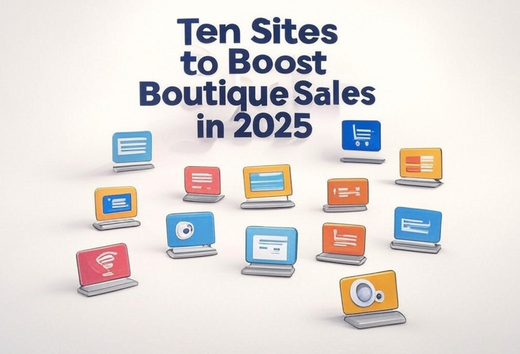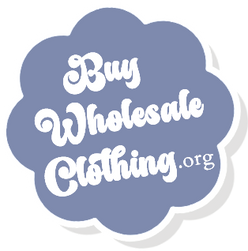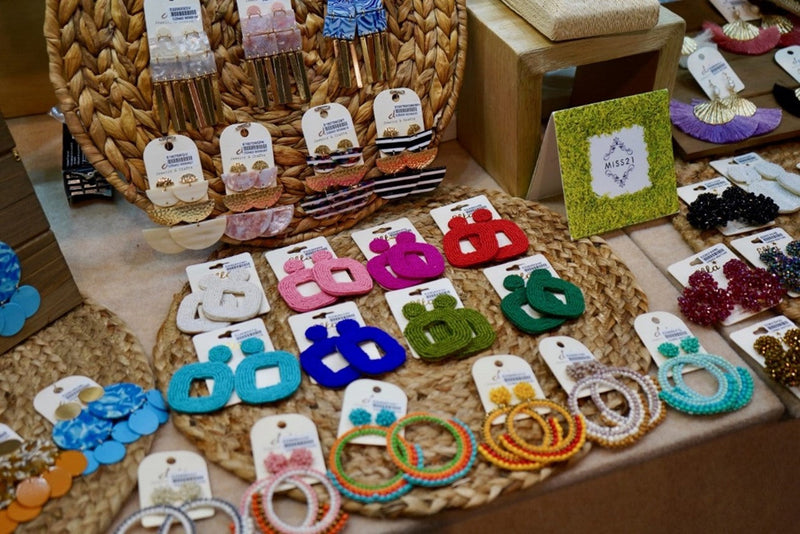
Boutique Blog – by Anna M
10 Sites to Sell More and Boost Boutique Sales in 2025
It’s the new year, a time when boutique owners are reviewing last year’s revenue and planning new strategies for 2025. Since the economic outlook and new shopping trends are key to sales strategies, we will take a look at how they are shaping up. First, let’s take a look at the macro economy and then the specific online clothing market to get an idea of the economic landscape, or the health of the consumer’s pocket. While price inflation in 2024 impacted consumer pocketbooks and discretionary spending, retail sales actually exceeded forecasts as the U.S economy grew 2.3%. And Fannie Mae analysts just adjusted their economic forecast up to 2.0% growth for 2025, slightly down from 2024 as the graph shows below: Let's now look at how the online clothing market compares to overall economic growth. The U.S. apparel market generated $358 billion this year with ecommerce accounting for $145 billion (40.5%) of total apparel revenue. And from 2018 to 2023, ecommerce sales rose by 70%. This graph shows the multi-year revenue numbers: What does this mean for you? If you have a boutique with an online presence or if you're considering creating an online boutique, you are heading in the right direction. And today a plethora of tools exist to help source your boutique, such as Bloom Wholesale who offers trendy women's apparel or fashion dropship suppliers like Bloom Dropship, Salehoo, Modily, and Spockett. If you are just getting started, drop shipping is an easy way to sell apparel without having to purchase, store or manage inventory. You only pay for what you sell, and the drop shipper sources all the products and does the shipping. But sourcing a boutique is just one aspect of the boutique business. Achieving sales success has more to do with understanding how consumers shop and where they shop. So, let’s look at some stats on online shopping trends: Between 2025 to 2030, experts predict an 8% CAGR for fashion e-commerce Social media influences 32% of Americans in the clothing they purchase Women’s apparel accounts for 68.5% of all e-commerce clothing revenue 80.7% of fashion e-commerce site traffic is from consumers using mobile devices The jaw dropping facts are this: 80% of all fashion e-commerce traffic comes from mobile devices and 32% of Americans say social media influenced the purchase of the clothes in their closet. This graph shows mobile shopping percentages by retail category: Live Shopping Sites Social ecommerce is the next great disruptor in the retail industry. A study from Aftership found that 34% of US consumers aged 18-34 make purchases through live shopping each week and this trend will be a key driver in the 2025 retail landscape and beyond. What’s behind the explosion in social commerce? Free sites such as Facebook Live currently dominate social commerce. The platform saw 67.8 million buyers in 2024 while Instagram is predicted to see 45.3 million buyers. TikTok is predicted to see 35.8 million. This interactive approach helps to build trust, drive sales and reach a wide audience. It is worth pointing out that while Facebook and Instagram offer lives for free, they do not guarantee viewers. Many boutiques combine free and paid sites to optimize sales, such as using Channelize along with TikTok live events. Regardless, live shopping is a growing trend you can adopt to enhance your online presence. Toward that goal, below are top 10 live shopping platforms for apparel: 1. Videeo Videeo offers personalized video and claims to boost customer engagement by 250%. It offers a mobile app wizard for iOS and Android devices and integrates with Shopify. 2. Skeepers Skeepers offers the ability to host thousands of shopping parties and utilize social media to attract new customers. It also integrates with the #1 ecommerce platform, Shopify. 3. GoLive GoLive combines livestream shopping with artificial intelligence and real-time analytics. Some of the brands that they have partnered with include Guess, Samsung, and LG. 3. Bambuser Bambuser is focused on interactive live video streaming. According to their website, their average add-to-cart is 31%, while its chat engagement is 24%. split screen. 4. Amazon Live Amazon Live is a free streaming app and available for U.S. sellers registered in the Amazon Brand Registry. It does require 3rd party apps to integrate with Shopify. 5. Facebook Live Shopping Facebook offers new Live features on its Facebook Page to connect with your audience and sell items. It does require 3rd party apps to integrate into your Shopify store. 6. TikTok Shop TikTok Shop blends live stream with eCommerce for a dynamic shopping experience and to reach younger, social media-savvy consumers. It does require 3rd party apps to integrate your Amazon and Shopify stores. 7. TalkShopLive TalkShopLive offers live stream & home shopping with a built-in buying experience. With the TSL Seller iOS app, you can go live via your desktop and it integrates with Shopify. 8. Popshop Live Popshop Live has an app for Android and iOS devices and includes an intuitive seller dashboard and producer tool for livestream and it integrates with Shopify. 9. Channelize Channelize is great for hosting five events or less per month to an audience no bigger than 50. They integrate with Shopify and offer a basic free plan for live shopping. 10. Confer With Confer has a basic free plan but aims to offer you the features to link a high-value customer with one of your reps or a virtual appointment. It integrates with Shopify. Live Shopping is growing fast with a variety of options to help online boutiques expand their audience reach by tapping into large numbers of ecommerce shoppers. But it's not just live shopping that is trending. Online marketplaces are also driving online sales. Top Marketplace Sites Online marketplaces can offer online boutique a way to expand business. Marketplaces have become a platform to reach more audiences in the shortest possible time and maximize conversion and sales. If you are a fashion retailer selling through your online website and looking to generate more revenue, online fashion marketplaces can be a great option to grow your sales. The biggest benefit of online marketplaces is convenience. No matter which platform you use to start your e-commerce journey, you don’t have to get out of your comfort zone. From starting, organizing, and managing to delivery, everything can be done from anywhere you live or even if you shift. Not only can you access it, but also you get client support in case of an emergency. Here are the top 6 online fashion marketplaces: 1. Amazon Fashion Marketplace 2. Etsy Fashion Marketplace 3. Walmart Fashion Marketplace 4. Facebook Fashion Marketplace 5. Poshmark 6. ASOS Marketplace In summary, the ways in which consumers shop online is always evolving. Live shopping and online marketplaces are gaining speed and giving online boutiques an opportunity to expand their customer base and grow sales. Integrating these shopping trends and sites into your sales strategies will be paramount to success, as is building loyalty and repeat purchases with personalized shopping and incentives. Growing U.S. ecommerce numbers support that online boutiques are heading in the right direction and while 2025 will have some inflation trade winds, leveraging TikTok and other sites to tap into growing Gen Z online purchases is a real opportunity. Livestream sales reached $50 billion in 2023 and are estimated to grow by 36% in the next three years. Add it all up and it’s time to jump on board!

